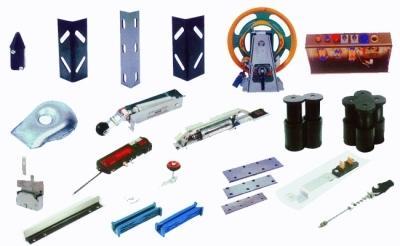Elevate Your Training with the Latest Lift Accessories

Image Source-Google
When it comes to weightlifting, having the right accessories can make a world of difference in your training routine. From lifting straps to knee sleeves, there are a variety of tools available to help you maximize your performance and reach your fitness goals. In this article, we will explore some of the latest lift accessories that can take your training to the next level.
Lifting Straps
Lifting straps are a popular accessory among weightlifters, particularly when it comes to exercises like deadlifts and rows. These straps are designed to improve your grip strength and allow you to lift heavier weights without worrying about your grip giving out. Here are some benefits of using lifting straps:
Benefits of Lifting Straps
- Enhanced grip strength
- Ability to lift heavier weights
- Reduced risk of grip fatigue
- Improved muscle engagement
Knee Sleeves
Knee sleeves are another popular accessory that can benefit weightlifters, especially those who perform exercises like squats and lunges. These sleeves provide support and compression to the knees, helping to improve stability and reduce the risk of injury. Here are some reasons to consider using knee sleeves:
Reasons to Use Knee Sleeves
- Increased knee support
- Improved stability
- Reduction in knee pain
- Enhanced performance
Weightlifting Belt
A weightlifting belt is a staple accessory for many weightlifters, as it provides support to the lower back and core during heavy lifts. By wearing a weightlifting belt, you can improve your lifting form and reduce the risk of injury. Here are some advantages of using a weightlifting belt:
Advantages of Weightlifting Belt
- Increased intra-abdominal pressure
- Enhanced core stability
- Reduced lower back strain
- Improved lifting technique
Wrist Wraps
Wrist wraps are essential for weightlifters who perform exercises that put a strain on the wrists, such as bench press and overhead press. These wraps provide support and stability to the wrists, allowing you to lift heavier weights with confidence. Here are some benefits of using wrist wraps:
Benefits of Wrist Wraps
- Wrist support
- Prevention of wrist injuries
- Improved wrist stability
- Increased confidence in lifts
Lifting Shoes
The right footwear is crucial for weightlifting, which is why lifting shoes are a must-have accessory for serious lifters. These shoes are designed to provide stability and support during lifts, with features like elevated heels and firm soles. Here are some reasons to invest in lifting shoes:
Reasons to Invest in Lifting Shoes
- Improved ankle stability
- Enhanced lifting performance
- Better weight distribution
- Reduced risk of foot injuries
By incorporating these latest lift accessories into your training routine, you can elevate your performance, improve your technique, and reduce the risk of injury. Whether you're a beginner or a seasoned lifter, having the right tools at your disposal can make all the difference in reaching your fitness goals.
Unlocking the Benefits of Online Consultation for Physiotherapy: A Guide to Remote Rehabilitation
Image source – Google
Advancements in technology have revolutionized the field of healthcare, including physiotherapy. Online consultations have become increasingly popular, offering patients the opportunity to receive remote rehabilitation services from the comfort of their own homes.
This guide explores the benefits of online consultation for physiotherapy and provides valuable insights into how you can make the most of remote rehabilitation.
The Benefits of Online Consultation for Physiotherapy
Convenience and Accessibility
- Eliminates the need for travel to a clinic, saving time and money
- Allows patients to access physiotherapy services from anywhere, even in remote locations
- Enables individuals with mobility issues or transportation challenges to receive the care they need
Personalized Care
- One-on-one sessions with a physiotherapist for personalized treatment plans
- Continuous monitoring and adjustments to the rehabilitation program based on progress and feedback
- Individualized exercises and techniques tailored to the specific needs and goals of the patient
Cost-Effective Solutions
- Reduces overhead costs for both patients and healthcare providers
- Eliminates the need for expensive equipment and facilities, resulting in lower treatment costs
- May be covered by insurance plans, making physiotherapy more accessible to a broader population
How to Make the Most of Remote Rehabilitation
Choose the Right Platform
- Opt for a secure and user-friendly online platform for your consultations
- Ensure that the platform complies with privacy regulations to protect your personal information
- Verify that the platform has the necessary features for conducting virtual physiotherapy sessions effectively
Prepare Your Space
- Set up a quiet and well-lit area in your home for the online consultation
- Ensure that you have enough space to perform exercises and movements during the session
- Remove any distractions or obstacles that may interfere with the rehabilitation process
Communicate Effectively
- Be open and honest with your physiotherapist about your symptoms, concerns, and goals
- Ask questions and seek clarification on any instructions or recommendations provided during the session
- Provide feedback on your progress and any discomfort or issues you may experience during the rehabilitation process
Stay Committed to Your Treatment Plan
- Follow the exercises, stretches, and lifestyle recommendations prescribed by your physiotherapist
- Attend scheduled online consultations regularly to track your progress and make necessary adjustments to your treatment plan
- Maintain open communication with your physiotherapist between sessions to address any concerns or challenges you may encounter
Conclusion
Online consultation for physiotherapy offers a convenient, personalized, and cost-effective solution for individuals seeking remote rehabilitation services. By choosing the right platform, preparing your space, communicating effectively, and staying committed to your treatment plan, you can unlock the full benefits of online consultations and achieve optimal results in your rehabilitation journey.
Transform Your Smile: The Ultimate Guide to Composite Veneers in Toronto

Composite veneers can help you achieve the perfect smile you've always dreamed of. If you're considering this cosmetic dental procedure in Toronto, this ultimate guide will provide you with all the information you need to know before getting composite veneers.
What are Composite Veneers?
Composite veneers are thin shells made of tooth-colored resin material that are bonded to the front surface of your teeth. They are designed to improve the appearance of your teeth by covering up imperfections such as stains, chips, cracks, or gaps. Composite veneers are a popular choice for those looking to enhance their smile without undergoing more invasive procedures.
Benefits of Composite Veneers:
- Instantly improve the appearance of your teeth
- Customizable to match the color and shape of your natural teeth
- Minimally invasive procedure compared to other dental treatments
- Durable and stain-resistant
- Cost-effective option for smile enhancement
Who is a Good Candidate for Composite Veneers?
- Individuals with stained or discolored teeth
- Those with chipped, cracked, or uneven teeth
- People with gaps between their teeth
- Patients looking for a quick and effective cosmetic dental solution
The Process of Getting Composite Veneers
The process of getting composite veneers typically involves the following steps:
Initial Consultation
- During the initial consultation, your dentist will examine your teeth and discuss your goals for treatment.
- You will have the opportunity to ask any questions you may have about the procedure.
Preparation
- Your dentist will prepare your teeth by removing a small amount of enamel to create room for the veneers.
- Impressions of your teeth will be taken to create custom veneers that fit perfectly.
Bonding
- Your dentist will bond the veneers to the front of your teeth using a special adhesive.
- The veneers will be shaped and polished to ensure a perfect fit and natural appearance.
Follow-Up
- Your dentist may schedule a follow-up appointment to ensure the veneers are comfortable and functioning properly.
- You will be advised on how to care for your new veneers to ensure their longevity.
Choosing the Right Dentist in Toronto
When considering composite veneers in Toronto, it's essential to choose a reputable dentist who specializes in cosmetic dentistry. Here are some factors to consider when selecting a dentist:
Experience
- Look for a dentist who has experience performing composite veneer procedures.
- Ask to see before and after photos of previous patients to assess the quality of their work.
Technology
- Choose a dentist who uses the latest technology and techniques for composite veneers.
- Modern equipment can ensure a precise fit and natural look for your veneers.
Reviews
- Read online reviews and testimonials from previous patients to gauge the dentist's reputation.
- Ask for recommendations from friends or family who have had cosmetic dental work done.
Cost of Composite Veneers in Toronto
The cost of composite veneers in Toronto can vary depending on several factors, including the number of veneers needed, the complexity of the case, and the dentist's expertise. On average, the cost of composite veneers in Toronto ranges from $250 to $1500 per tooth.
Factors that can Affect the Cost:
- Number of veneers required
- Materials used for the veneers
- Location of the dental practice
- Additional procedures or treatments needed
Financing Options:
- Some dental offices offer financing plans to help patients cover the cost of composite veneers.
- You may also consider dental insurance or healthcare financing options to make the procedure more affordable.
Aftercare Tips for Composite Veneers
Proper aftercare is essential to maintain the longevity and appearance of your composite veneers. Here are some tips to keep your veneers looking their best:
Regular Oral Hygiene:
- Brush and floss your teeth regularly to prevent plaque buildup and maintain oral health.
- Avoid using abrasive toothpaste or hard-bristled toothbrushes that can damage the veneers.
Avoid Staining Foods and Drinks:
- Avoid consuming foods and drinks that can stain your teeth, such as coffee, tea, and red wine.
- If you do indulge, rinse your mouth with water afterward to minimize staining.
Regular Dental Check-Ups:
- Visit your dentist for regular check-ups and cleanings to ensure the health of your teeth and veneers.
- Your dentist can identify any issues early on and provide necessary treatment.
By following these aftercare tips and maintaining regular dental visits, you can enjoy your new smile for years to come.
Transform Your Outdoor Space: Expert Tips from a Deck Contractor
Image Source: Google
Transforming your outdoor space into a functional and beautiful area can significantly enhance your home's curb appeal and increase its overall value. Whether you are looking to build a brand-new deck or renovate your existing outdoor space, the expertise of a deck contractor can make a world of difference. Here are some expert tips from a seasoned deck contractor in Calgary to help you elevate your outdoor living area:
Designing Your Dream Deck
Consider Your Needs and Lifestyle
- Identify how you plan to use your outdoor space (e.g., hosting gatherings, relaxing, cooking).
- Determine the size of your deck based on the activities you envision.
- Think about features like built-in seating, fire pits, and outdoor kitchens that align with your lifestyle.
Choose the Right Material
- Wood: Classic and versatile, but requires regular maintenance.
- Composite: Low-maintenance, durable, and eco-friendly option.
- PVC: Highly durable and resistant to rot, mold, and insects.
- Exotic Hardwoods: Luxurious and long-lasting, but come with a higher price tag.
Incorporate Design Elements
- Select a cohesive color scheme and style that complements your home's architecture.
- Integrate lighting for ambiance and safety, such as deck post lights or string lights.
- Add privacy features like trellises, pergolas, or planters to create a cozy retreat.
Enhancing Outdoor Comfort
Create Zones for Different Activities
- Define areas for dining, lounging, and grilling to maximize functionality.
- Use outdoor rugs, furniture, and planters to delineate each zone visually.
- Incorporate shade options like umbrellas, awnings, or pergolas for relief from the sun.
Integrate Greenery and Landscaping
- Plant a mix of shrubs, flowers, and trees to add texture and color to your outdoor space.
- Consider container gardening or vertical gardens for limited spaces.
- Install a water feature like a fountain or pond to create a soothing atmosphere.
Add Comfortable Furnishings
- Invest in weather-resistant and comfortable outdoor furniture for relaxation and entertainment.
- Include cushions, throw pillows, and outdoor rugs for added comfort and style.
- Opt for durable materials like wicker, teak, or aluminum that can withstand the elements.
Maintaining Your Outdoor Oasis
Regular Cleaning and Inspection
- Sweep your deck regularly to remove debris and prevent mold and mildew growth.
- Inspect for any loose boards, nails, or structural issues that may require repairs.
- Clean spills promptly to prevent staining and damage to your deck surface.
Seal and Protect Your Deck
- Apply a sealant or stain to protect your deck from moisture, UV rays, and wear and tear.
- Reapply sealant every 1-3 years to maintain the integrity of your deck's material.
- Consider adding a waterproofing membrane under your deck for added protection.
Winterize Your Outdoor Space
- Store outdoor furniture, cushions, and accessories in a dry, covered area during the winter months.
- Shovel snow off your deck promptly to prevent moisture damage and ice buildup.
- Consider using a snowmelt system or ice melt that is safe for your deck material.
By following these expert tips from a deck contractor, you can transform your outdoor space into a stunning oasis that you can enjoy for years to come. Whether you are looking to create a cozy retreat or a vibrant entertainment area, a well-designed and well-maintained deck can enhance the beauty and functionality of your home's exterior. Consult with a professional deck contractor to bring your outdoor vision to life and make the most of your outdoor living space.
Navigating the Middle School Years: Tips for Parents and Students

Image Source: Google
Middle school can be a challenging time for both students and parents. It is a period of significant change and growth, both academically and emotionally. To help you navigate this transitional phase successfully, here are some tips for parents and students to consider. If you are looking for the best middle school then browse this website.
For Parents
Stay Involved
- Attend parent-teacher conferences and school events to stay informed about your child's progress and school activities.
- Communicate regularly with your child's teachers to address any concerns and support your child's academic needs.
- Encourage your child to get involved in extracurricular activities to help them develop their interests and social skills.
Set Expectations
- Establish clear expectations for your child regarding academics, behavior, and responsibilities at home.
- Encourage your child to take ownership of their education and set goals for themselves.
- Provide a structured and supportive environment at home to help your child succeed in school.
Support Emotional Well-being
- Be understanding and patient with your child as they navigate the challenges of adolescence.
- Encourage open communication and be available to listen to your child's concerns and feelings.
- Help your child develop healthy coping mechanisms to manage stress and anxiety.
For Students
Stay Organized
- Use a planner or calendar to keep track of assignments, projects, and important dates.
- Break down tasks into smaller, manageable steps to avoid feeling overwhelmed.
- Establish a routine for studying and completing homework to stay on top of your schoolwork.
Get Involved
- Explore different clubs, sports teams, or activities to find your interests and make new friends.
- Volunteer in your community or participate in school events to develop your leadership skills and make a positive impact.
- Engage with your teachers and ask for help when needed to improve your understanding of the material.
Take Care of Yourself
- Get enough sleep, eat a balanced diet, and exercise regularly to maintain your physical and mental well-being.
- Practice self-care activities such as meditation, journaling, or spending time with friends to reduce stress and improve your mood.
- Seek help from a trusted adult or counselor if you are struggling with schoolwork or your emotions.
Conclusion
By following these tips, parents and students can navigate the middle school years with greater ease and success. It's important to remember that this time of transition is a learning experience for both parents and students, and by working together and supporting each other, you can make the most of this exciting and challenging phase in your child's education.
The Art of Home Design: A Look Inside the Creative Process

Image Source: Google
Designing a home is not just about putting together furniture and decor. It is a creative process that involves attention to detail, spatial awareness, and a keen eye for aesthetics. The art of home design requires a balance between functionality and beauty, where every element is carefully chosen to create a harmonious living space. If you need more information about home designer, you may visit here https://www.myhummingbirdhome.com/
Let's take a closer look at the creative process involved in designing a home.
The Inspiration Phase
Before any design work can begin, it is important to gather inspiration and ideas for the project. This phase sets the tone for the entire design process and helps in creating a vision for the final outcome. Some common sources of inspiration for home design include:
- Home design magazines and websites
- Architectural books
- Nature and surroundings
- Travel experiences
Research and Planning
Once the inspiration phase is complete, the next step is to conduct thorough research and planning. This phase involves:
- Setting a budget
- Creating a timeline
- Measuring the space
- Gathering materials and resources
Research and planning are crucial to ensure that the design process runs smoothly and stays within budget and timeframe.
The Design Process
With inspiration and planning in place, the actual design process can begin. This phase involves:
Concept Development
The concept development phase is where ideas start to take shape. This is where the overall theme and style of the home are determined. Design elements such as color schemes, furniture layouts, and lighting plans are established during this phase.
Creating Mood Boards
Creating mood boards is a common practice in the design process. Mood boards are visual representations of the design concept and help in conveying the overall look and feel of the space. They often include images of furniture, color swatches, fabric samples, and other design elements.
Space Planning
Space planning is a crucial aspect of home design. It involves arranging furniture and decor in a way that maximizes functionality and flow within the space. Proper space planning ensures that the home is both aesthetically pleasing and practical for everyday use.
Bringing the Vision to Life
Once the design phase is complete, it's time to bring the vision to life. This involves:
Choosing Furniture and Decor
Choosing the right furniture and decor is key to achieving the desired look for the home. Factors such as style, size, and material should all be taken into consideration when selecting pieces for the space.
Color Selection
Color plays a significant role in home design. The right color palette can enhance the overall ambiance of the space, while the wrong colors can detract from the design. Careful consideration should be given to the selection of colors for walls, furniture, and decor.
Accessorizing
Accessories are the finishing touches that bring a home design together. From artwork and rugs to throw pillows and plants, accessories add personality and style to the space. It's important to choose accessories that complement the overall design concept.
Final Touches and Review
Once the design is complete, the final touches are added, and a thorough review is conducted to ensure that every detail is in place. This phase involves:
Final Styling
Final styling involves adding any remaining accessories or decor items to complete the look of the space. This is where the design truly comes together, and the vision is realized.
Review and Adjustment
Before finalizing the design, a review and adjustment phase are essential. This is where any necessary changes are made to ensure that the design meets the client's expectations and requirements.
Client Presentation
Once the design is complete and all adjustments have been made, a final presentation is made to the client. This is an opportunity for the client to see the design in its entirety and provide feedback before implementation.
Conclusion
The art of home design is a multifaceted process that requires creativity, attention to detail, and a deep understanding of space and aesthetics. From gathering inspiration to bringing the vision to life, each phase of the design process plays a crucial role in creating a beautiful and functional living space. By following a structured and thoughtful approach to home design, designers can transform ordinary spaces into extraordinary homes.
Uncover Hidden Threats: The Ultimate Guide to Professional Hidden Camera Detectors
Welcome to the ultimate guide on professional hidden camera detectors! In today's digital age, hidden cameras are becoming more prevalent, making it crucial to protect your privacy and security. Whether you are concerned about potential surveillance in your home, office, or hotel room, having a reliable hidden camera detector can help you uncover hidden threats.
Why You Need a Hidden Camera Detector
Hidden cameras can be disguised as everyday objects such as smoke detectors, wall clocks, or even electrical outlets, making them difficult to detect with the naked eye. Here are some reasons why you need a hidden camera detector:
Privacy Protection
- Prevent unauthorized surveillance in your home or office.
- Protect your personal and sensitive information from being recorded without your consent.
Security Concerns
- Avoid potential threats of blackmail or extortion from unauthorized recordings.
- Ensure the safety and security of your premises by detecting hidden cameras.
Types of Hidden Camera Detectors
There are various types of hidden camera detectors available on the market, each offering different features and capabilities. Here are some common types of hidden camera detectors:
RF Detectors
- RF detectors can detect radio frequency signals emitted by wireless cameras.
- They are effective in detecting hidden cameras that transmit audio or video wirelessly.
IR Detectors
- IR detectors use infrared technology to detect hidden cameras that use infrared LEDs for night vision.
- They are ideal for detecting hidden cameras in low-light or dark environments.
Lens Detectors
- Lens detectors are designed to detect camera lenses by reflecting light off the lens surface.
- They are effective in detecting pinhole cameras or other types of hidden cameras with lenses.
Factors to Consider When Choosing a Hidden Camera Detector
When selecting a hidden camera detector, it is essential to consider various factors to ensure you choose the right device for your needs. Here are some factors to consider:
Detection Range
- Consider the detection range of the hidden camera detector to determine its effectiveness in detecting hidden cameras.
- Choose a detector with a sufficient range to cover the area you want to scan for hidden cameras.
Frequency Coverage
- Ensure the hidden camera detector can detect a wide range of frequencies to cover different types of hidden cameras.
- Choose a detector with adjustable frequency settings for better detection capabilities.
Portability
- Consider the size and portability of the hidden camera detector for ease of use and convenience.
- Choose a compact and lightweight detector that is easy to carry around for scanning different locations.
Tips for Using a Hidden Camera Detector
To effectively use a hidden camera detector and uncover hidden threats, follow these helpful tips:
Scan the Room Carefully
- Start by scanning the room systematically, focusing on areas where hidden cameras are commonly found.
- Pay attention to suspicious objects or potential hiding spots for hidden cameras.
Use Multiple Detection Methods
- Combine different detection methods such as RF scanning, IR scanning, and lens detection for comprehensive coverage.
- Use the detector in different modes to maximize its detection capabilities.
Test Regularly
- Perform regular checks with your hidden camera detector to ensure its functionality and accuracy.
- Test the detector in different environments and lighting conditions to improve its performance.
Conclusion
Uncovering hidden threats with a professional hidden camera detector is essential for safeguarding your privacy and security in today's digital world. By understanding the types of hidden camera detectors available, factors to consider when choosing a detector, and tips for using it effectively, you can enhance your detection capabilities and protect yourself from potential surveillance. Invest in a reliable hidden camera detector today to ensure peace of mind and security in your surroundings.
Unveiling the Truth: Inside the Presentencing Investigation Process

Image Source: Google
When a person is convicted of a crime, the next step in the criminal justice process is sentencing. Before a judge can impose a sentence, they often rely on a presentencing investigation report to gather all the necessary information to make an informed decision. This article will take you inside the presentencing investigation process to understand how it works and its significance in the criminal justice system.
The Purpose of Presentencing Investigation
The presentencing investigation serves several important purposes in the criminal justice system:
1. Gathering Information
- The primary goal of a presentencing investigation is to collect information about the convicted individual.
- This includes details about the person's background, criminal history, and other factors that may influence the sentencing decision.
2. Assessing Risk
- Another key purpose of the presentencing investigation is to assess the risk posed by the convicted individual.
- By examining their past behavior and circumstances, the court can determine the likelihood of reoffending and the appropriate level of supervision or treatment needed.
The Process of Presentencing Investigation
The presentencing investigation process involves several steps:
1. Interviewing the Convicted Individual
- A probation officer or other authorized individual conducts an interview with the convicted individual to gather information.
- This may include details about their personal history, family background, education, employment, and substance abuse history.
2. Collecting Records
- The probation officer collects official records, such as criminal history, school records, employment history, and mental health records.
- These records provide a comprehensive picture of the convicted individual's background and circumstances.
3. Contacting Third Parties
- As part of the investigation, the probation officer may contact third parties, such as family members, employers, teachers, or treatment providers.
- These individuals can provide additional insights into the convicted individual's character, behavior, and support system.
Factors Considered in Presentencing Investigation
During the presentencing investigation, several factors are taken into account:
1. Criminal History
- The individual's prior criminal record, including the nature and severity of past offenses, plays a significant role in the sentencing decision.
- A history of repeated offenses may result in a harsher sentence, while a first-time offender may receive more leniency.
2. Personal Circumstances
- The convicted individual's personal circumstances, such as age, mental health, substance abuse issues, and family background, are carefully considered.
- These factors help the court determine the underlying causes of criminal behavior and the appropriate interventions needed for rehabilitation.
3. Risk Assessment
- Based on the information collected during the presentencing investigation, a risk assessment is conducted to evaluate the likelihood of the individual reoffending.
- This assessment helps the court decide on the most suitable sentence, including probation, treatment programs, or incarceration.
Role of Presentencing Investigation in Sentencing Decision
The presentencing investigation report plays a crucial role in the sentencing decision:
1. Providing Recommendations
- Based on the findings of the investigation, the probation officer may provide recommendations to the court regarding the appropriate sentence.
- These recommendations take into account the individual's risk level, treatment needs, and potential for rehabilitation.
2. Informing the Judge
- The presentencing investigation report presents the judge with a comprehensive overview of the convicted individual's background and circumstances.
- This information helps the judge make an informed decision that takes into consideration both the seriousness of the offense and the potential for rehabilitation.
3. Ensuring Fairness
- By conducting a thorough presentencing investigation, the court aims to ensure fairness in the sentencing process.
- Considering all relevant factors and individual circumstances helps prevent arbitrary or biased sentencing decisions.
Conclusion
The presentencing investigation process is a critical step in the criminal justice system that provides the court with essential information to make fair and informed sentencing decisions. By examining the individual's background, circumstances, and risk factors, the court can tailor the sentence to address the underlying causes of criminal behavior and promote rehabilitation. Understanding the role of presentencing investigation helps shed light on the sentencing process and the factors considered in determining an appropriate sentence.
The Power of Acupuncture: Treating Skin Allergies Holistically
Acupuncture is a traditional Chinese medicine practice that has been used for thousands of years to treat a wide range of health conditions. One area where acupuncture has shown particular promise is in the treatment of skin allergies. By targeting specific acupuncture points on the body, practitioners believe they can help alleviate the symptoms of skin allergies and restore the body to a state of balance. In this article, we will explore the power of acupuncture as a holistic approach to treating skin allergies. Now Wellness Clinic offers expert acupuncture services, providing individuals suffering from skin allergies with effective and personalized treatment options.
The Basics of Acupuncture
Before delving into how acupuncture can help with skin allergies, it is important to understand the basics of this ancient practice. Acupuncture involves the insertion of thin needles into specific points on the body known as acupuncture points. These points are believed to be connected by pathways known as meridians, through which vital energy, or qi, flows. By stimulating these points, practitioners aim to restore the proper flow of qi and bring the body back into balance.
How Acupuncture Works for Skin Allergies
When it comes to treating skin allergies, acupuncture works by addressing the root cause of the allergic reaction rather than just focusing on the symptoms. Practitioners believe that skin allergies are often a result of imbalances in the body's energy flow, which can manifest as redness, itching, and inflammation on the skin. By targeting specific acupuncture points related to the immune system and overall balance, acupuncture aims to correct these imbalances and reduce the body's overreactive response to allergens.
- Acupuncture can help regulate the immune system, which plays a key role in the development of skin allergies.
- By reducing inflammation in the body, acupuncture can help alleviate symptoms such as itching and redness.
- Acupuncture can also help improve overall skin health by promoting circulation and detoxification.
The Benefits of Acupuncture for Skin Allergies
There are several benefits to using acupuncture as a holistic approach to treating skin allergies:
- Non-invasive: Acupuncture involves the use of thin needles that are inserted into the skin, making it a non-invasive treatment option for skin allergies.
- No side effects: Unlike some medications used to treat skin allergies, acupuncture is generally free of side effects.
- Customized treatment: Acupuncture treatments are tailored to each individual based on their unique symptoms and constitution, making it a personalized approach to healing.
What to Expect During an Acupuncture Session
If you are considering acupuncture as a treatment for your skin allergies, it is helpful to know what to expect during a typical acupuncture session. Here are some key things to keep in mind:
Consultation
During your first visit, your acupuncturist will conduct a thorough consultation to gather information about your medical history, lifestyle, and symptoms. This information will help them develop a personalized treatment plan tailored to your specific needs.
Needle Insertion
Once your treatment plan has been established, your acupuncturist will begin the needle insertion process. The needles used in acupuncture are extremely thin, so the insertion process is generally painless. You may feel a slight tingling or dull ache as the needles are inserted, but this sensation is typically mild and dissipates quickly.
Acupuncture Points
Depending on your specific symptoms and constitution, your acupuncturist will target certain acupuncture points on your body. These points may be located near the affected area of your skin or on other parts of the body that are believed to be connected to the skin meridians.
Combining Acupuncture with Other Therapies
While acupuncture can be an effective standalone treatment for skin allergies, it can also be combined with other holistic therapies to enhance its effects. Some complementary therapies that may be beneficial for treating skin allergies include:
Herbal Medicine
Chinese herbal medicine is often used in conjunction with acupuncture to support the body's healing process. Certain herbs have been found to have anti-inflammatory and immune-modulating effects, which can be especially helpful for skin allergies.
Dietary Changes
Some skin allergies may be exacerbated by certain foods or dietary habits. Your acupuncturist may recommend dietary changes to support your skin health and reduce allergic reactions. Eating a balanced diet rich in nutrients and antioxidants can help strengthen your immune system and promote healthy skin.
Stress Management
Stress can be a major trigger for skin allergies, as it can weaken the immune system and exacerbate inflammation. Mind-body practices such as yoga, meditation, and tai chi can help reduce stress and support overall well-being, complementing the effects of acupuncture treatments.
Conclusion
Acupuncture offers a holistic and personalized approach to treating skin allergies by addressing the root cause of the condition and restoring balance to the body. By targeting specific acupuncture points related to the immune system and overall health, acupuncture can help alleviate symptoms such as itching, redness, and inflammation. If you suffer from skin allergies and are looking for a natural and effective treatment option, consider exploring the power of acupuncture as part of your healing journey.
The Importance of Liability Insurance for Entrepreneurs: Safeguarding Your Business and Assets

Image Source: Google
As an entrepreneur, you've poured your heart and soul into building your business from the ground up. However, no matter how careful you are, accidents can happen, and you may find yourself facing a lawsuit. This is where liability insurance comes in. It serves as a crucial safety net for your business, protecting your assets and ensuring that you can continue to thrive even in the face of unexpected events. In this article, we will explore the importance of liability insurance for entrepreneurs and how it can safeguard your business and assets.
What is Liability Insurance?
Liability insurance is a type of insurance that helps protect individuals and businesses from the risk of being held liable for negligence that results in injury or damage to another person or their property. In the business world, liability insurance is designed to cover legal costs, settlement payments, and other expenses that may arise if a third party sues your business for damages.
Types of Liability Insurance for Entrepreneurs:
- General Liability Insurance: This type of insurance provides coverage for common risks, such as slip-and-fall accidents or property damage caused by your business.
- Professional Liability Insurance: Also known as errors and omissions insurance, this coverage protects you from claims of negligence or inadequate work performance.
- Product Liability Insurance: If your business manufactures, distributes, or sells products, this insurance can protect you from liability claims related to product defects.
Why is Liability Insurance Important for Entrepreneurs?
Liability insurance is a crucial investment for entrepreneurs, as it offers a range of benefits that can help protect your business and personal assets:
Benefits of Liability Insurance:
- Legal Protection: In the event of a lawsuit, liability insurance can cover the cost of legal fees, court-awarded damages, and settlements, saving your business from financial ruin.
- Asset Protection: Without liability insurance, your personal assets, such as your home or savings, may be at risk if your business is sued. Liability insurance helps shield your personal wealth from business liabilities.
- Peace of Mind: Knowing that you have the protection of liability insurance can provide peace of mind and allow you to focus on growing your business without constant worry about potential risks.
How to Choose the Right Liability Insurance Policy:
When selecting a liability insurance policy for your business, it's essential to consider your specific industry, risk factors, and budget. Here are some factors to keep in mind:
Factors to Consider When Choosing Liability Insurance:
- Business Size and Industry: The type and amount of coverage you need may vary depending on the size of your business and the industry you operate in.
- Risk Assessment: Conduct a thorough risk assessment to identify potential liabilities that your business may face, such as property damage, bodily injury, or professional errors.
- Policy Limits and Deductibles: Evaluate the coverage limits and deductibles of each policy to ensure that they align with your business's needs and financial capabilities.
Conclusion
Liability insurance is a vital tool for entrepreneurs to protect their businesses and assets from unforeseen risks and legal liabilities. By investing in the right insurance coverage, you can safeguard your business's financial stability and reputation, allowing you to focus on what you do best – growing your business.



